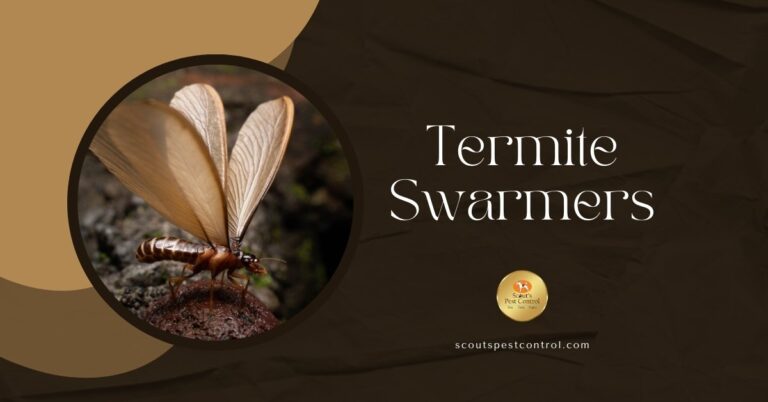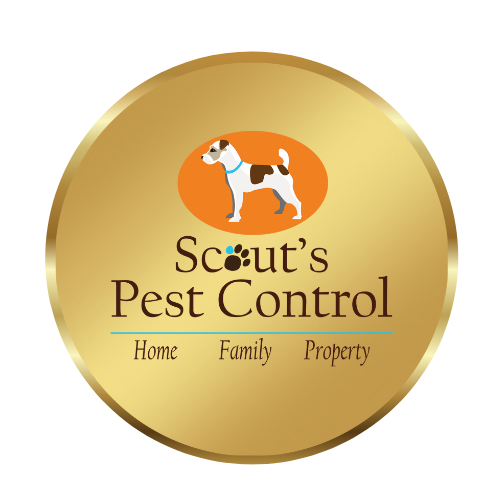As spring arrives and the weather changes. Insects wake up from their winter sleep as the first flowers start to bloom. Spring is a wonderful time of year. However, there’s a darker side to the beginning of spring. A less welcome sign of the seasonal transformation often emerges.

This signals a potential danger for homeowners, which is the potential for termite infestations. Termites swarm in early spring and these winged termites are not just a nuisance; they signal potential danger to your home or property. It is imperative for homeowners to be vigilant. Furthermore, understanding their behavior, why they swarm, the risks involved, and how to mitigate these dangers is crucial for homeowners and property managers alike.
Understanding Termite Swarming Behavior
Termite swarming is a natural part of the termite life cycle which is the survival behavior of the species. Typically, it occurs when mature termite colonies reach a certain size. The conditions for survival and a conducive environment such as temperature and humidity levels signal it is time to take flight. They then find a place to thrive and begin new colonies. As aforementioned, this usually happens during spring but can vary depending on the climate and species and if the conditions are conducive, can happen at any time.
Swarmers are known as (alates), which are sexually mature males and females that take flight during swarming season. Not all termites in a colony can fly; only these specific members have wings for this purpose. After mating, these termites shed their wings and seek suitable locations to start new colonies. Take note, the shedding of wings is one of the major signs. Homeowners can often mistake winged termites for flying ants and often treat with a DIY product that does not eradicate the problem.
Why Do Termites Swarm?
The primary reason behind termite swarming is continual growth and reproduction of the species. Typically, they often swarm as temperatures increase and after heavy rainfall, which is typical in spring. Nevertheless, spring is not the only time that termite swarms occur as swarming can occur at any time during the year after rainfall. They are attracted to light and this is why you often find the swarmers near window sills and other openings where there light shines.
As termite colonies grow in size and resources within their current location begin to dwindle, the need to expand becomes critical for survival. Swarming allows termites to disperse widely, ensuring that some will find new areas rich in resources where they can establish new colonies.
This behavior also helps spread genetic diversity among termite populations. Mixing with termites from other colonies during swarming reduces the risk of inbreeding, leading to healthier and more robust future generations.
The Potential Dangers of Termite Swarms

While swarming itself does not cause damage—swarmers do not eat wood—the presence of swarmers indicates an established colony nearby that could be causing unseen structural damage to your home or property. Termites feed on cellulose-based plant materials, which unfortunately include most building materials used in homes. If you see a termite swarm, you can almost guarantee that colonies are in the area and are already feeding.
Unchecked, a termite infestation can weaken wooden structures, leading to costly repairs or even catastrophic structural failures over time. Therefore, spotting swarming termites should be taken seriously as an early warning sign of potential infestation. One thing to keep in mind is the potential cost of damage from a termite infestation. Each year, in the US, millions of dollars worth of damage to homes are the result of termites and a failure to treat and protect against termite infestations.
Typical Signs of A Termite Infestation and Termite Swarmers
There are signs of termite infestations which include swarming termites and whilst most of the signs below are for an active infestation, you will note swarms are also typical within the behavior of the species.

Here are the top signs of a termite infestation to watch out for:
- Termite Swarmers: The presence of winged termites, also known as swarmers as we previously mentioned, is a clear indication that a termite colony is nearby. These swarmers are often seen in large numbers around windows, doors, or light sources.
- Mud Tubes: Subterranean termites build mud tubes as protective tunnels between their nests and food sources. These pencil-sized tubes can be found along walls, foundations, or other surfaces and indicate an active termite infestation. This is especially prevalent in crawl spaces. Make sure you get a crawl space inspected for signs of termites.
- Wood Damage: Termites feed on wood from the inside out, leaving behind hollowed-out or damaged wood structures. Look for sagging floors, hollow-sounding wood when tapped, or visible tunnels within wooden furniture or structural components.
- Discarded Wings: After swarming and finding a mate, termite swarmers shed their wings near entry points into your home. Finding discarded wings around windowsills or doorways suggests an ongoing termite activity.
- Frass (Termite Droppings): Drywood termites push out their fecal pellets called frass from small kick-out holes near infested areas. These droppings resemble tiny wood-colored pellets and can accumulate below infested wooden structures.
- Tight-Fitting Doors and Windows: As termites tunnel through wooden frames and structures, they can cause doors and windows to become difficult to open or close smoothly.
- Clicking Sounds: Soldier termites may bang their heads against the tunnel walls when disturbed as a warning signal to the colony. If you hear clicking sounds coming from walls or wooden structures, it could indicate an active termite infestation.
There are strategies you can employ to try and negate this risk of having to deal with a termite infestation.
Mitigating the Dangers Posed by Termite Swarmers
Upon encountering termite swarmers around your property, immediate action is essential. Here is some strategies that will help you understand how to approach a potential problem on your property.

- Identify: Confirm that what you're seeing are indeed termite swarmers and not another type of insect. Termites are often confused with ants. To find out more about these differences, read our article on ants and termites.
- Inspect: Look for signs of damage or active termites around your property. Keep in mind that a greater problem will exist in the area if you see signs.
- Consult: Contact a professional pest control service such as Scouts Pest Control who are experienced in dealing with termites.
- Prevent: Take steps to make your property less attractive to termites by reducing moisture levels, clearing debris near your home's foundation, and storing firewood away from your house.
- Treat: Follow recommendations from our pest control experts regarding treatment options if an infestation is found.
Preventative measures can also be highly effective before any signs of swarming occur. Regular and routine inspections by Scouts pest control can identify specific potential vulnerabilities in your home’s defenses against termites before they become serious problems.
In Other Words

Termite swarmers serve as nature's way for these pests to spread out and form new colonies but we as homeowners or property managers can also use this as an alarm bell about potential hidden dangers lurking within our walls or foundations. By understanding why termites swarm and recognizing the risks involved, homeowners can take proactive steps towards preventing infestations before they start or addressing them swiftly if they occur. With vigilance and professional assistance when necessary, it's possible to protect your property from the silent threat posed by termites. If you notice any of these signs in your home or property, it's crucial to contact a professional pest control service like Scouts Pest Control immediately for proper inspection and treatment options.





